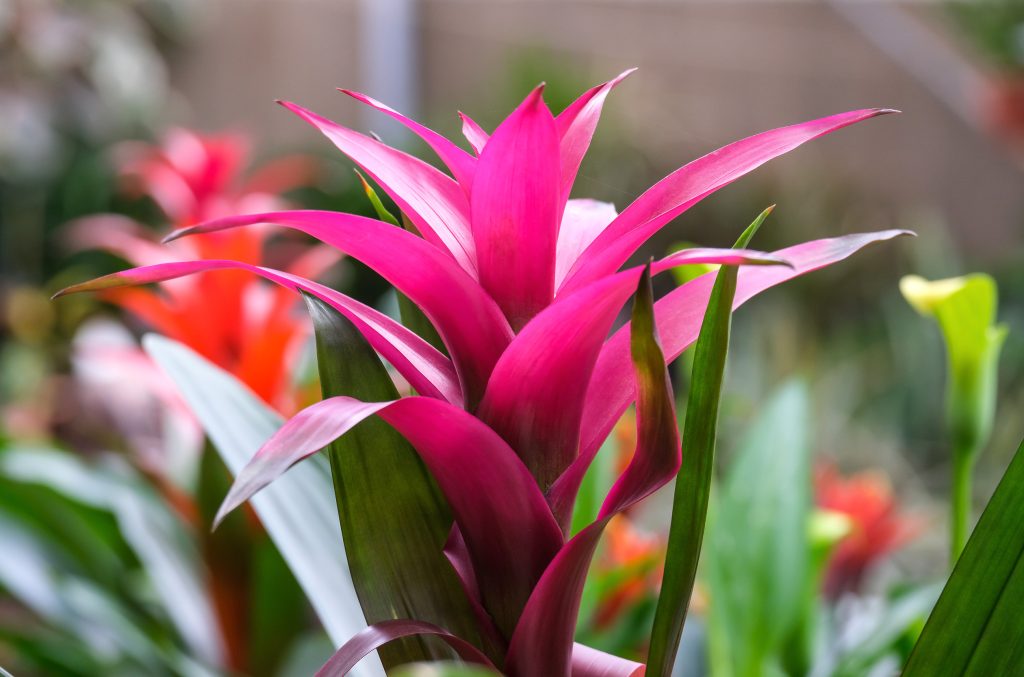The Bromeliad is a diverse family of flowering plants which includes over 3,000 species, including popular varieties such as the Pineapple plant. These plants are native to the tropical and subtropical regions of the Americas, but they can be found growing in a variety of habitats worldwide, from rainforests to deserts. Bromeliads are known for their unique and striking appearance, with leaves that range from simple and spiky to elaborate and colorful. The most recognizable feature of the Bromeliad is the central cup or “tank,” which collects water and provides a home for small animals and insects. Some species of Bromeliads also produce beautiful flowers that can last for weeks or even months, making them a popular choice for indoor decor. These plants are safe for pets, making them an excellent choice for pet parents.
Bromeliads love bright, indirect lighting.
Water thoroughly with rainwater or filtered water when the top 10% of the soil is dry.
These plants grow best in higher humidity levels, preferably between 50%- 65%, and temperatures between 65-80°F. They are sensitive to cold temperatures and should be protected from drafts or direct airflow from heaters during winter. If the temperature drops below 50°F, the plant may suffer damage.
To propagate bromeliads, remove a pup and plant in a well draining soil mix.
The exact timing and frequency of blooming can vary depending on the species and growing conditions. In general, most bromeliads will bloom once and then begin to produce pups that will eventually mature and bloom themselves. To encourage your bromeliad to bloom again, it is important to provide it with bright, indirect light, high humidity levels, and a consistent watering schedule. Avoid exposing your plant to extreme temperatures or drafts, as this can stress the plant and inhibit blooming.
